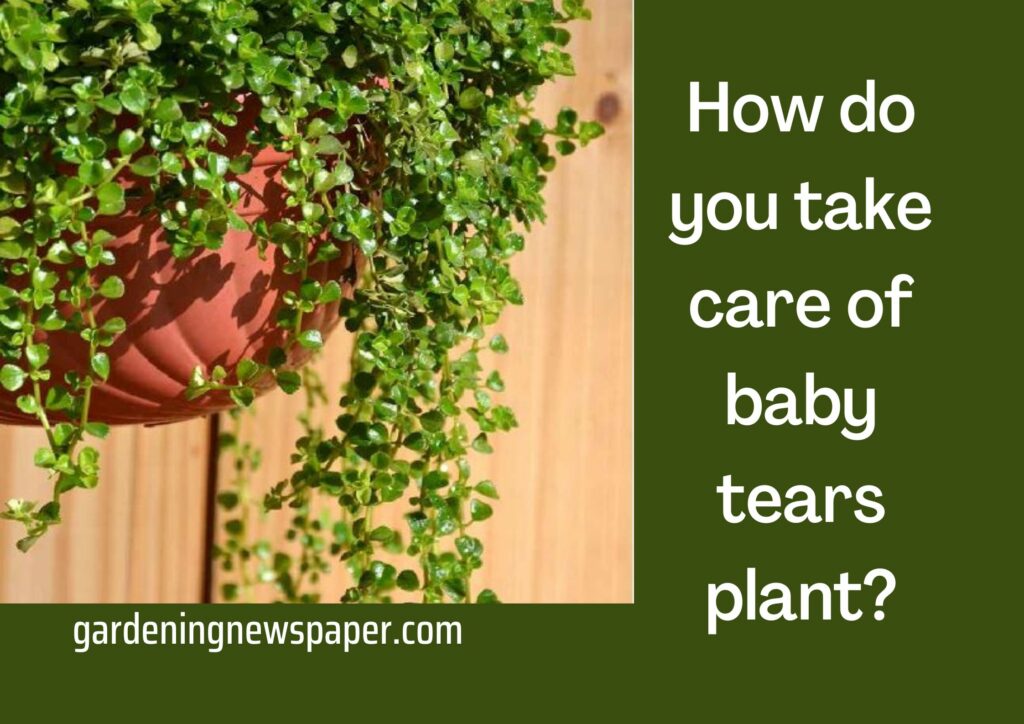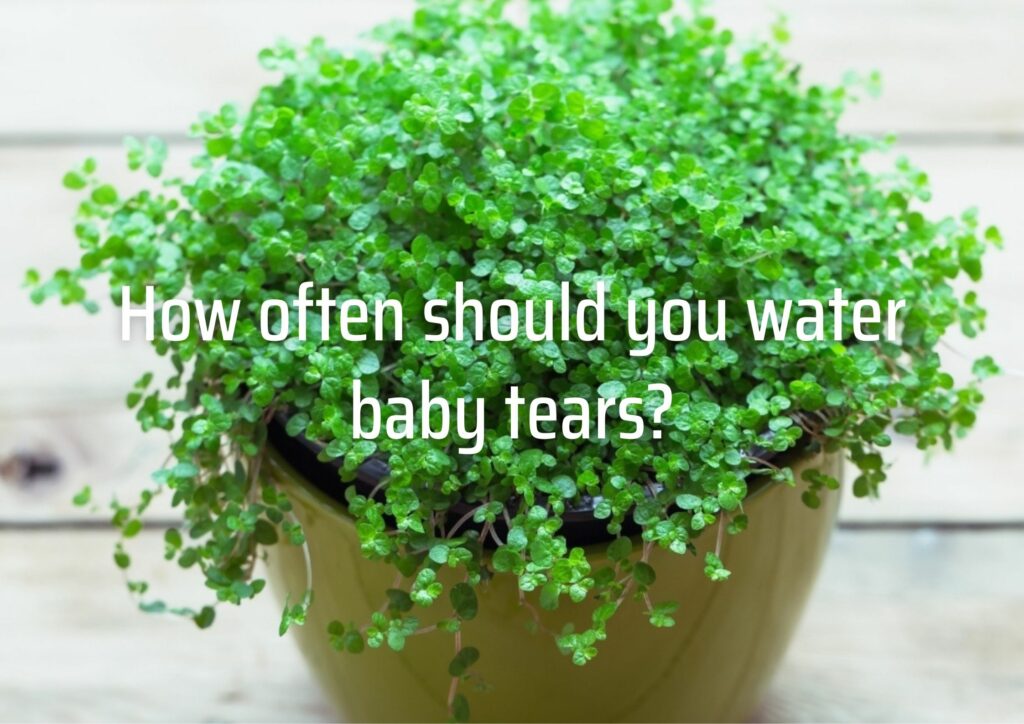Baby’s Tears Plant Care – How do you take care of baby tears plant?

You may find it difficult to bear the frustration of large houseplants that need too much light or “leg-room”, so you might try small baby’s tears. They “weep” pretty well in the shade. Baby’s tears ( Soleiroliasoleirolii) has tiny leaves that look like luxuriant Moss. It carpets the ground beneath houseplants and bonsai tree, or in fairy gardens and Terrariums. The baby’s tears plant will spill over the sides of pots.
Although it is not difficult plant care for baby’s tears plants, you need to pay attention to watering as this baby’s tears can throw a tantrum when they are thirsty and wilt violently. It is not the same as Pilea and Hemianthus Callitrichoides. Both are also called baby’s tears.
Baby’s Tears Plant Characteristics – How big do baby tears grow?
- Baby tears, a creeping vine that is native to the western Mediterranean islands Corsica and Sardinia, grow only 1 to 5 inch tall and can root itself wherever it spreads. Its pink or thread-like green shoots and 1/4-inch-long leaves make it look like moss.
- This plant is often used outside in hot areas as a ground cover for shady places. Sometimes, insignificant pinkish-white flowers appear in the late spring or early Summer.
Also answering to the intriguing nicknames of mind-your-own-business and peace-in-the-home as well as baby tears, Corsican creeper, and many other monikers, this plant reportedly doesn’t stand up well to foot traffic. Still, it will make a green carpet where no one ever treads. Although it is not hardy, sources say that it will be reliably evergreen in USDA Zones 9 through 11. It must spend the winter indoors in frosty regions.
Selecting the Right Soil for Baby Tears Plants – What kind of soil does baby tears like?

Baby tears will be most grateful for organic potting soil. It is humus rich and well-drained so that it will grow best. To ensure that the soil drains quickly, you may want to add one third of coarse builder’s sand to three portions of the potting soil. The sand should not cause the baby pot plants to rot as it requires constant moisture.
Baby tear plants can cascade over the edges and into their containers. To avoid this, place them in a hanging container or trim the delicate “tresses”, before they reach the saucer.
Do babys tears need drainage?
This creeper is best placed in a shallow, wide pot with drainage holes. It is important to not confuse this creeper with baby tears, also known as the aquarium plant. Soleirolii isn’t one of the indoor plants that can grow in water.
Does baby tears need sun? Can baby tears grow in low light?
Baby tears can be outside in the sun, but they might get too much heat in hotter climates. It is most commonly grown in partial shade or full shade.
Indoors, this would mean a position in bright and indirect light, or on an east or west-facing windowsill, where baby tears only receive part of the sun. You could also use it as a ground cover for a larger plant in the south-facing window, provided that it is at least partially shaded. If the green color becomes too yellowed, you can move it to a more shaded position.
How often should you water baby tears?

Keep the soil of this plant moist during spring and summer. Reduce the amount of water you give as the days get shorter from fall to winter. However, don’t let the soil dry completely.
You might consider watering your plants from below, as overhead watering can cause damage to the leaves. Place water in the saucer of the pot and let it drain into the soil. You can add more water until the soil is damp. After that, drain any water from the saucer. If the soil feels wetter than normal, take the pot out of its saucer and put it in a sink to drain the water.
Fertilizing Baby Tears Plants
Use a balanced fertilizer like 20-20-20 once per month in spring and summer. The strength should be half of the recommended. Avoid feeding your plant during winter and autumn as they often slow down to a crawl.
The baby crawls by creeping. If it is still a quick crawl, you might want to decrease the frequency with which you fertilize. You should resume the monthly feedings in spring. Never fertilize when the soil has dried completely, as this can cause root burns.
Temperature & Humidity – Do baby tears like to be misted?
What kills baby tears plant? This plant loves to be cool. It prefers daytime temperatures between 60-65 degrees Fahrenheit, and nighttime temperatures between 50 and 55 degrees. It can tolerate humidity and normal household temperatures.
If you want to make sure your baby tears plants are happy, place them in a cool room with a humidity container. This is a tray with gravel in the bottom that has water. The water should not touch the pot. To avoid hard water spots, you might also need to mist your plant at least once per day using rainwater, or spring water.
Propagating Baby Tears Plant

This plant propagates itself because its stems grow at the nodes and spread. To make new babies you will need to divide the plant, but preferably in spring when it is at its best.
You can then remove the plant from the pot by using a sharp knife. Once it is cut vertically, divide it into as many pieces as you like and give each one its own organic potting mix. You should keep newly divided plants out in direct sunlight for at least a few days to allow them to recover from the “surgery.”
Safety Considerations
The baby tears plants are non-toxic for pets and can sometimes be sold as tortoise food. One blogger reported that it was used in salads that would normally call for watercress. Its edibility to humans is not clear.
The main danger to the plant is its ability to become invasive in areas where it is hardy. This is why it is sometimes called the Corsican curse. When you take your plant outside for the summer, place it where it won’t escape and allow it to root itself into the landscaping.
Baby Tears Plant Potential Diseases and Pests
- This plant is not susceptible to insect pests. browning and yellowing of the leaves can often be attributed to overwatering or underwatering. Why is my baby tears losing leaves? Too little water can cause brittle leaves, while yellower lower leaves could indicate excessive moisture that is rotting the roots. Too much sunlight can cause the foliage to look yellowed.
- If the plant is severely dehydrated, water it and place it in an area that receives only indirect bright light. To increase the humidity, you might place the plant in a plastic bag with holes for about a month.
- If root rot is the cause, you can remove the plant from the pot. Use pruning shears or a sharp knife to remove any brown and mushy sections. Then, repot it in new soil. Next, give the plant more light and less water.
